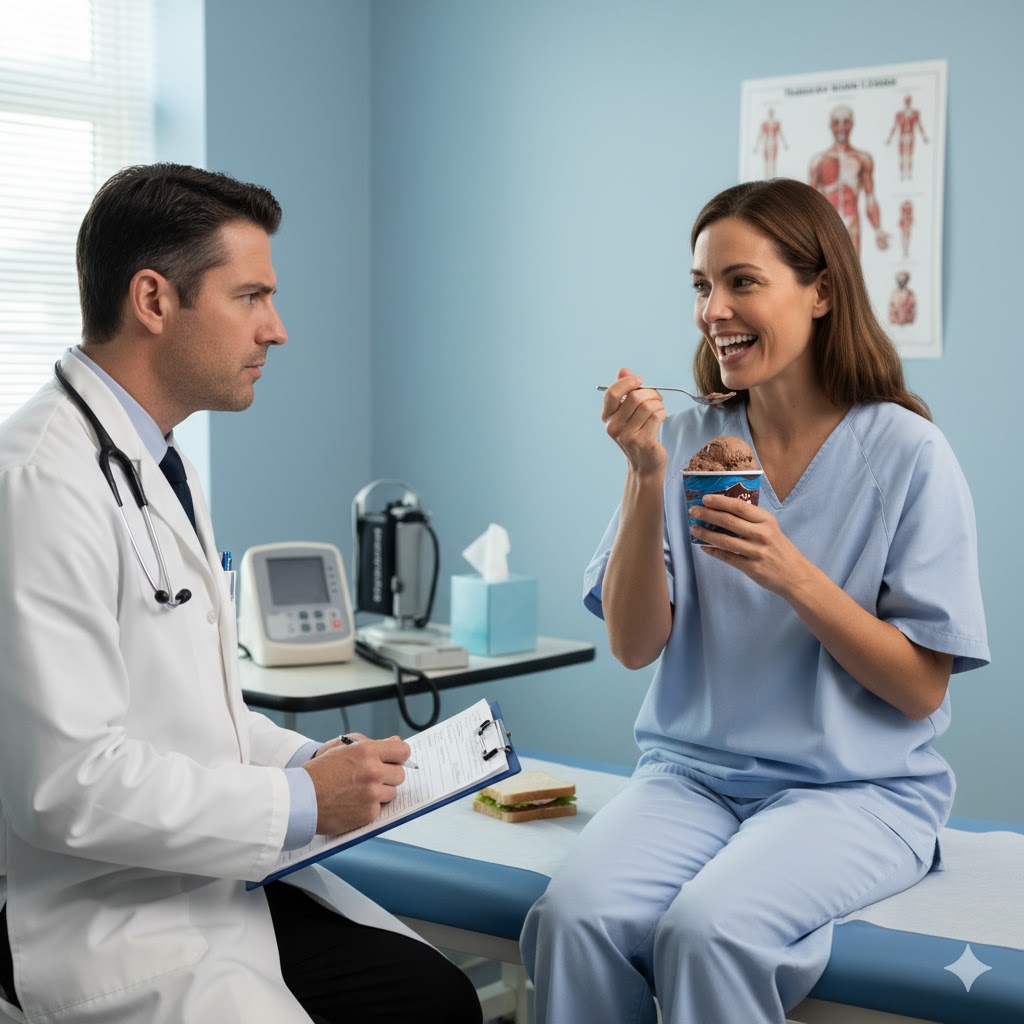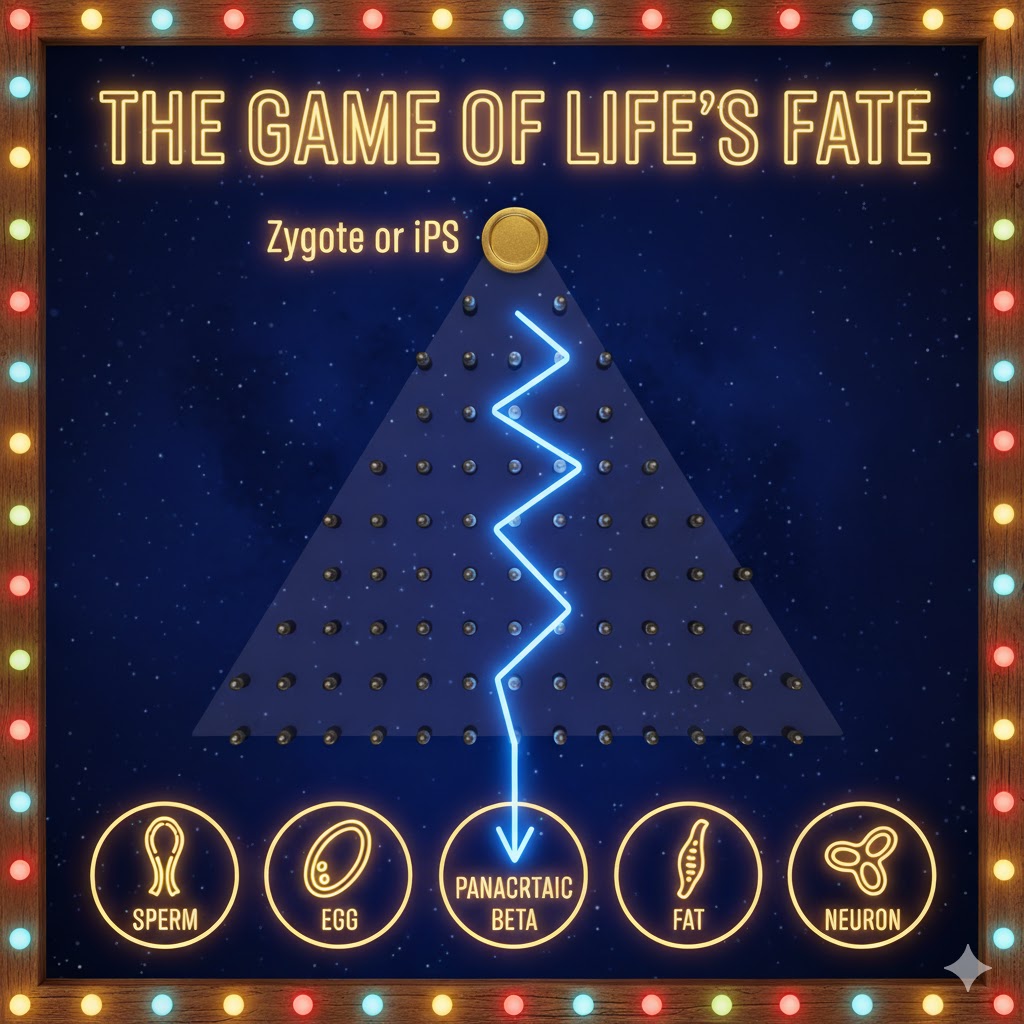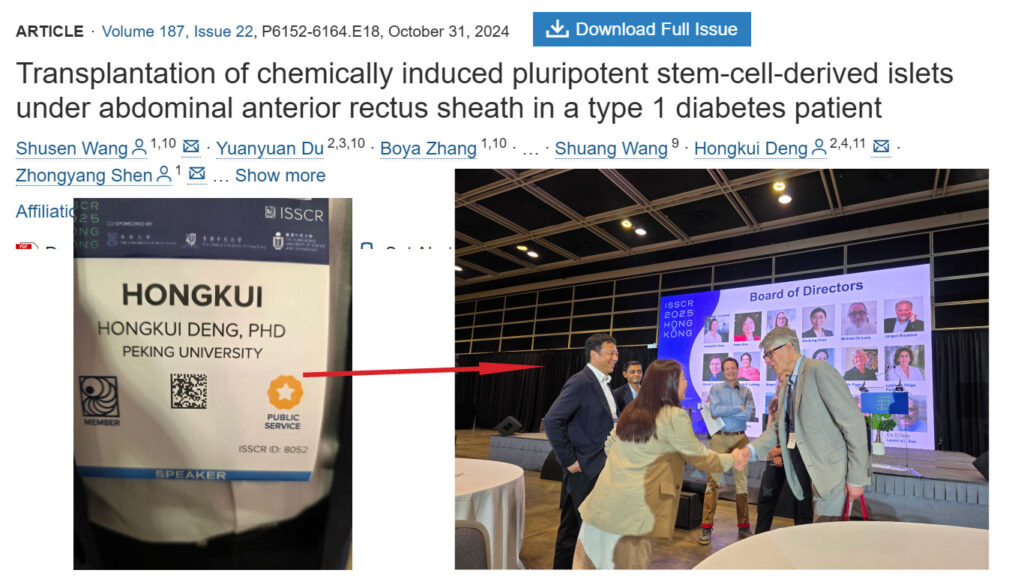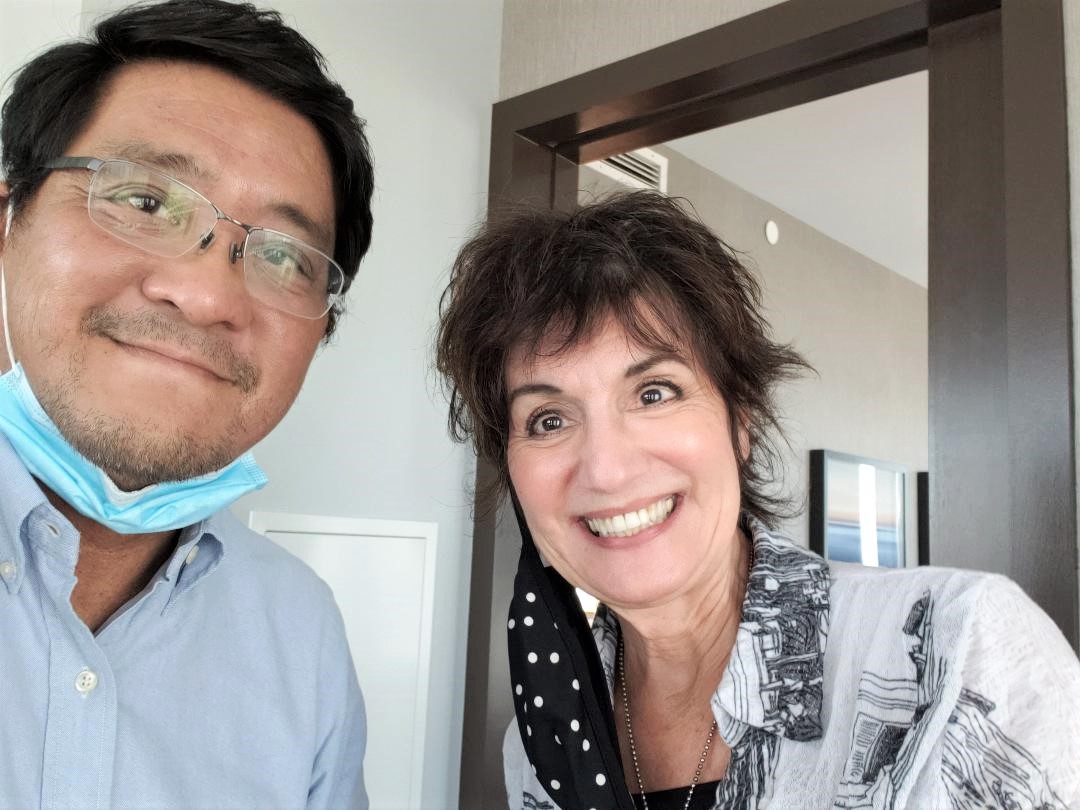
Walking with the New Gods
In our previous blog about creating humans without reproduction, we referenced the induced pluripotent stem cell. This blog will explain a bit more what that entails and how some brilliant scientists that I met at the ISSCR (International Society for Stem Cell Research) conference in Hong Kong have cured the previous incurable scourge of insulin-dependent diabetes.
But first, What is Diabetes?
Diabetes mellitus comes in two flavors: sweet and tasteless. What I mean is that Type 2 diabetes usually results from excess fat cells causing metabolic resistance to existing insulin. Insulin is released by beta cells of the pancreas in response to high blood sugar and causes glucose to enter cells. Glucagon, produced by pancreatic alpha cells in response to low blood sugar, signals the liver to release stored glucose.
Type 2 (adult onset, somewhat genetic) is the “sweet” version—the system is still working, which is partly why Ozempic and Mounjaro work well for weight loss. They are glucagon-like peptides that slow glucose absorption from the GI tract and naturally drive up insulin levels, effectively treating the high-glucose, insulin-resistant state of metabolic syndrome X.
Type 1 diabetes, by contrast, is a non-genetic autoimmune or toxic destruction of pancreatic beta cells—the loss of half your thermostat, if you will. You can only make glucagon (raise blood sugar, make things hotter) but can’t make insulin (lower blood sugar, make things cooler). This is why Type 1 patients can experience dangerously high glucose levels and slip into coma or death without regular insulin. It’s “tasteless” because the system can’t respond to the sweetness.
What is an IPS?
IPS stands for induced pluripotent stem cell. Since we all began as one omnipotent stem cell (the fertilized egg), every cell in embryonic and adult life undergoes progressive specialization and differentiation. In 2012, Professor Yamanaka won the Nobel Prize in Medicine and Physiology for discovering that even regular, differentiated cells could be reset to a primitive state by introducing four genes—Oct4, Sox2, Klf4, and c-Myc (OSKM)—via a retroviral vector.
As a relative layperson, I found it fascinating that the vendors at the conference have recipes, like the steps you need, to produce nearly all cell types from the IPS state.
Our diabetes story gets interesting here: Professor Hongkui Deng of Peking University discovered you can achieve the same cellular reset using chemical signaling instead of genetic manipulation. This is the breakthrough that changes everything.
Plinko with a Plan
Remember Plinko from “The Price is Right”? A ball drops from the top, bouncing left and right off pegs until it lands in a slot at the bottom, determining your prize. This is an excellent analogy for stem cell differentiation. Every level of the Plinko game from IPS to specialized cell has now been decoded. Scientists can rig the game: take a fat cell (or skin cell), reset it back to the puck at the top, then guide it down a predetermined path using genetic or chemical factors. In Deng’s case, that path leads to pancreatic beta cells.

Coming soon to a Billionaire's escape lair
I had the pleasure of meeting Professor Deng. His seminal paper is:
Cell (September 2024): “Transplantation of chemically induced pluripotent stem-cell-derived islets under abdominal anterior rectus sheath in a type 1 diabetes patient”
DOI: 10.1016/j.cell.2024.09.004
The glorious aspect of this therapy versus other IPS treatments is that all seven patients received cells derived from their own tissue—and they now have seven actual successes. There is no self/foreign confusion, no rejection risk, and no need for immunosuppressants. I often tell people taking allogeneic stem cells that while they work through exosome release, they’ll be hunted down by your immune system within days. In contrast, these bespoke pancreatic beta cells made from each patient’s own cells and implanted in the rectus sheath won’t be rejected. For all intents and purposes, Ben and Jerry are now your friend again after years of suffering near-death experiences from a broken system.
To listen to the podcast live lecture we enjoyed in Hong Kong, check out this link https://open.spotify.com/episode/34Ix6tMojsTE0hrQChdn3q
When will this be approved for commercial use? Probably not soon. Follow the money. Can you afford to rent a G4 and fly to the next Olympics while enjoying caviar and champagne in a sky booth? Then you can probably arrange a cure. As for intellectual property and scalability of personalized IPS therapy—those are questions of economics beyond my pay grade.
Nevertheless, perhaps altruists and optimists with friends in high places may someday prove me wrong.


